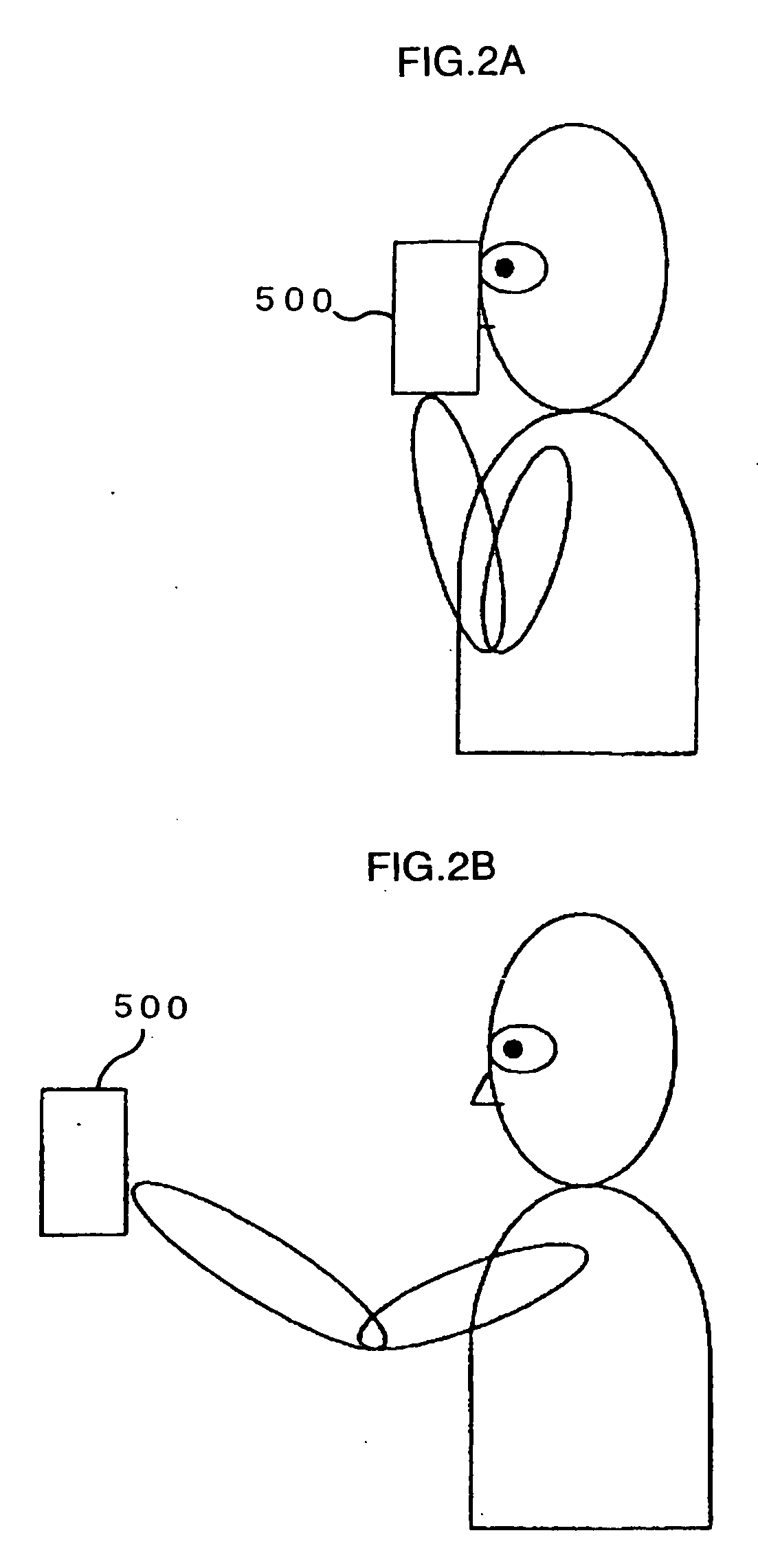Image blur correction camera and method for controlling of image blur correction
- Summary
- Abstract
- Description
- Claims
- Application Information
AI Technical Summary
Benefits of technology
Problems solved by technology
Method used
Image
Examples
first embodiment
[0045] A blur correction camera of a first embodiment of the present invention will now be described in detail with reference to FIG. 1 to FIG. 3. In the first embodiment, description will be given for the case of applying the present invention to a digital camera carrying out mainly still photography.
[0046]FIG. 1 is a block diagram showing the outline of a blur correction camera of the first embodiment of the present invention. As shown in FIG. 1, the blur correction camera of the first embodiment comprises a blur correction lens 110, a driver 111, an image-capturing element 120, a vibration detection sensor 130, a storage section 141, a recording medium 142, an optical viewfinder 150 constituted of a viewfinder optical system 151 and an eye-approach detection section 152, a liquid crystal monitor 160 and a CPU 170. The blur correction camera also comprises a monitor switch 181, a half-way push down switch 182 and an all-the-way push down switch 183.
[0047] The blur correction len...
second embodiment
[0080] A blur correction camera of a second embodiment is constructed so that the extent of movement of the blur correction lens 110 becomes large compared to the first embodiment, and the range over which blur correction can be performed is increased. The outline of a blur correction camera of the second embodiment is the same as the first embodiment shown in FIG. 1. Description here will mainly focus on points of difference from the first embodiment.
[0081] The blur correction lens 110 is part of a photographing optical system (not shown), as in the first embodiment, and is constituted of a single lens or a plurality of lenses that are capable of movement in a plane substantially orthogonal to the optical axis. The blur correction lens 110 of the second embodiment is constructed so as to be capable of movement over a wider range than that in the first embodiment. In this way, it is possible to carry out correction of image blur caused by comparatively large hand movement in the ca...
third embodiment
[0102] In the third embodiment, a description will be given of the case where the blur correction camera of the present invention is applied to a video camera for taking moving pictures.
[0103]FIG. 6 is a block diagram showing the outline of a blur correction camera of the third embodiment of the present invention. As shown in FIG. 6, the CPU 170 of the blur correction camera of the third embodiment also executes a control program that functions as an electronic blur correction section 173. A recording start switch 184 is provided instead of the half-way push down switch 182 and the all-the-way push down switch 183. Sections that are common to the first embodiment have the same reference numerals attached thereto, and their descriptions are omitted.
[0104] The electronic blur correction section 173 performs image blur correction for an image to be recorded by outputting an image formed on the image-capturing element 120 with a displacement in a direction opposite to the direction of...
PUM
 Login to View More
Login to View More Abstract
Description
Claims
Application Information
 Login to View More
Login to View More - R&D
- Intellectual Property
- Life Sciences
- Materials
- Tech Scout
- Unparalleled Data Quality
- Higher Quality Content
- 60% Fewer Hallucinations
Browse by: Latest US Patents, China's latest patents, Technical Efficacy Thesaurus, Application Domain, Technology Topic, Popular Technical Reports.
© 2025 PatSnap. All rights reserved.Legal|Privacy policy|Modern Slavery Act Transparency Statement|Sitemap|About US| Contact US: help@patsnap.com



